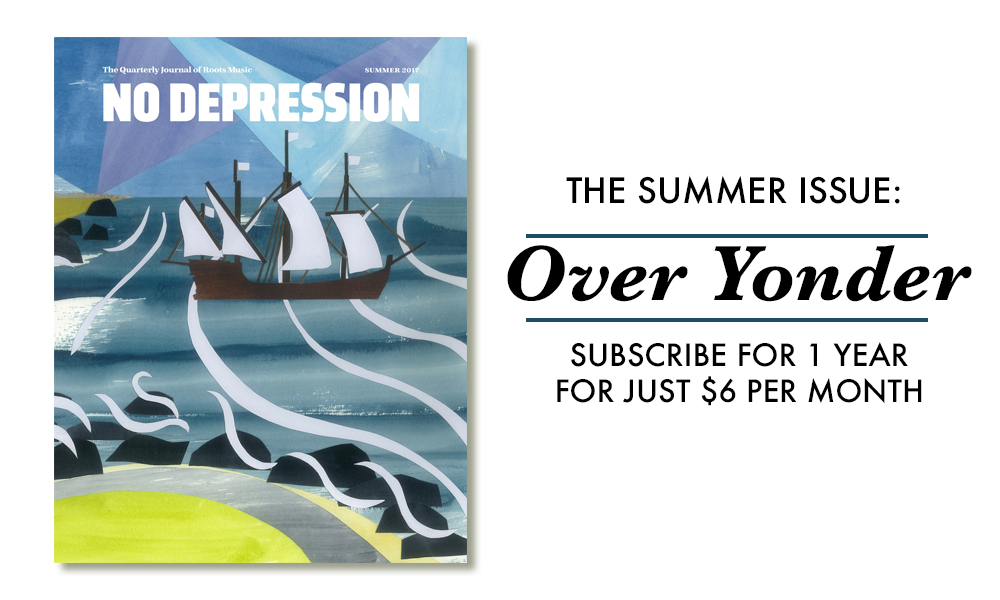Hello Stranger
About a week after last November’s presidential election, I started getting emails from writers who were working on stories for this issue, asking for extensions. Though a couple of them had to do with the typical things — tracking down sources, verifying facts — most were more along the lines of, “I just need a couple extra days to wrap my mind around this new reality.”
Of course, with a little space from the initial shock, it’s easy to recognize that there is no such thing as a “new” reality. We live in the same country today that we occupied on November 7, 2016, though those of us on the coasts would certainly do well to reckon with our sense of privilege and power, and our ideas about America in general.
After the last president was elected, we heard talk about the influence of the urban archipelago, a configuration of coastal cities that held much of the nation’s population and hence the most political sway. Of course, the ensuing eight years didn’t exactly bear that out, as representatives from places like Kansas, Wisconsin, and Kentucky categorically blocked the policies attempted by a progressive president who had graduated from Ivy League schools on the East Coast and was elected by folks in that urban archipelago.
So the pendulum swings, and here we are. (The reassuring thing about a pendulum is that it is always tethered to something.)
America is huge. In a former life, I drove all over it, singing songs, exploring. Boston to Orlando, Western New York to Northwest Oregon, Brooklyn to New Orleans, Portland to Los Angeles, Flagstaff to Seattle. I road Greyhound buses from Central Florida to Washington State, up and down the East Coast more times than I can count. I’ve driven I-10 through Texas and I’ve circled the central states from Denver to Utah, Utah to Montana, West Virginia to Wisconsin.
These are not just the names of places. They are communities of people who are bound together (or if you choose, separated) by Eisenhower’s highways. The people who live in these places gather at the gas station, the hardware store, the Waffle House or Denny’s parking lot, the Wal-Mart, the record store, the airfield, the barn, the tavern. Growing up they shoot squirrels and beer cans, get stoned and play Dylan tunes, go camping, sit on the corner and get real bored, watch the world go by, talk shit, fall in love, fall out of love, get afraid, overcome, feel like they’re flying. Just like I did growing up, way out on the East Coast.
In the weeks and months since the election, I’ve read the thinkpieces and the tweets and all the other stuff. I’ve seen stories wielded like surgical tools, bisecting our belief systems and ideas, our emotions and our landscapes into various “us”-es and “them”s. There are the liberals and the conservatives, the religious and the secular, the wealthy and the poor, the studious and the undereducated — and of course the coastal elites and the Midwesterners. But in all my travels, I’ve never met the people those stories talk about. I’ve met people who love Hank and Merle and Dolly, Steve and Bruce and Woody. People who like to look at fireworks and love it when the guitar is cranked up loud. People who see magic in fireflies and the way the sky churns ahead of a summer storm. People who want their kids to have it a little bit easier than they did.
So while I’ll concede that stories about division can be pretty powerful, I also know they’re not true. There’s a reason that one word for a good long story is a “yarn.” That the elements that connect a narrative are called “threads.” Ultimately stories are here for us to be drawn closer to one another, to experience the ways in which our lives are interwoven, knitted together.
We hadn’t intended to start the year with an issue exploring what the coastal media has come to call “Trump’s America.” But the stories unveiled their own threads. Here are the neighborhoods of Ohio, Indiana, Wisconsin, Michigan, Minnesota, Iowa, Kansas, Missouri, and Montana about which so much has lately been written. Here are the stories beyond the smoke and mirrors, about the social fabric of those communities, the threads that tie them together, and the ways that music — this same music that moves us all — brings light into every room it enters.
This “Hello Stranger” was written for the Spring 2017/Heartland issue of No Depression in print, which focuses on the artists and communities keeping roots music real between the coasts. Purchase a copy of the issue or subscribe today, to receive a full year of the ND print journal for just $6 per month.





